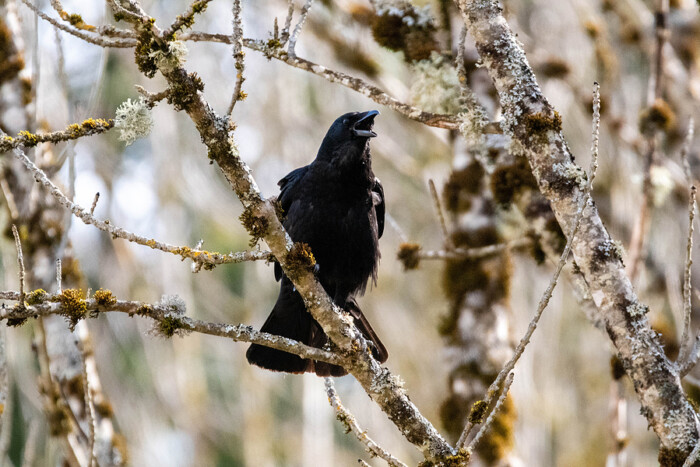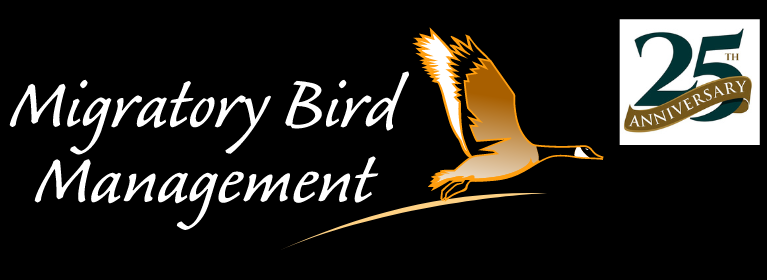
APPEARANCE
The American Crow is a medium sized solid black bird with a large beak and square tail.
BEHAVIOR
Crows are common birds, often seen in small family unit flocks called “murders”. They are some of the most intelligent and social animals on the planet and thrive in urban settings. They also have strong family bonds, working cooperatively with past broods to raise new chicks. In the fall, thousands of crows may flock together during migration and overwintering.
DIET
Crows are true opportunistic omnivores that feed on almost anything including nuts, fruits, rodents, crops, insects, worms, fish, crayfish, hatchling birds, eggs, carrion, and human food waste. They may also steal food from picnickers and have even been known to trick humans into leaving food unattended.
HABITAT
Crows are highly adaptable and can live nearly anywhere that has food to eat and a few trees to roost in. They can be found in both wild and urban areas.
NESTING
While crows prefer to nest in conifers, they may nest in other trees if conifers are not available. Crow nests are large and composed of sticks with a softer inner cup. Between 3-9 pale blue or green eggs with a few grey blotches are laid, which hatch in just over 2 weeks.
MIGRATION
Crows are resident birds in the Midwest, only migrating short distances to find food and water. They typically do not go far from their nesting areas year-round, though they may flock up with other family groups or the birds that migrate down from Canada.
ISSUES CAUSED BY CROWS:
- Damage to agricultural crops
- Large mess of droppings or gullet gravel under roosting trees
HOW TO MANAGE ISSUES WITH CROWS:
- Exclude birds from roosting areas using netting
- Harassment of birds damaging crops with lasers
Sources: The Audubon Society, Cornell Lab of Ornithology bird guide, Humane Society of the United States, Internet Center for Wildlife Damage Management, Nest Watch


